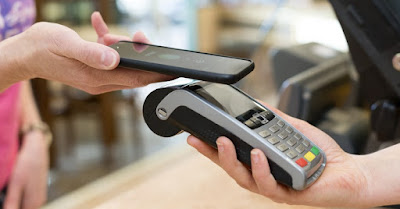Transactions made in New Zealand using electronic
modes are responsible for roughly two thirds of the revenue in the core
industries. This share in revenue has been growing in the past years as
compared to other payment modes primarily cash. While New Zealand Dollar
remains the most prominent payment retail currency, New Zealand has one of the
lowest cash to GDP ratio in the world. Electronic payments provides a number
key benefits this including reduced risk of fraud, greater accountability,
better tax revenue and convenience.
According to the study, ‘Payment
Landscape in New Zealand: Opportunities and Risk to 2021’, there are
number of payment mechanisms in New Zealand namely credit cards, contactless
scheme cards, proprietary EFTPOS system and swiped/inserted. Most adults in the
New Zealand’s economy possess cards and it is used more frequently thus
resulting in the highest share in revenue by volume. Although cards has the
largest share in the market however, according to Ministry of business
innovation and employment huge additional cost associated with credit cards are
to be borne by the economy due to usage of credit card in place of lower cost
EFTPOS network. Positive market dynamics are emerging apart from New Zealand’s
proprietary EFPOT system with contactless and online scheme debit card causing
this payment gain momentum as compared to other payment modes. The growth of
scheme debit products provides many benefits such as additional security and
the ability to make contactless and online transactions in contrast to
proprietary EFTPOS which has suffered from a sustained lack of investment.
Nevertheless, such benefits come with additional cost, as schemes have
introduced interchange fees on contactless (and online) debit transactions, in
contrast to proprietary EFTPOS, which does not attract such fees.
Car payments in the New Zealand are of primarily
3 types. Proprietary EFTPOS which are swiped, scheme debit which are swiped,
inserted or contactless and open or closed credit cards which are also swiped,
inserted or contactless.
Proprietary EFTPOS is the traditional form of
debit payment card used in New Zealand.
In contrast to other countries such as Australia and Canada – EFTPOS as
a technology in New Zealand remains fundamentally unchanged from when it was
introduced in the 1980s. Proprietary EFTPOS transactions are processed via a
‘switch to issuer’ model. The first standard scheme debit card (named as such
to distinguish it from contactless scheme debit – see below) was introduced to
New Zealand in 2006. The cards are issued by a consumer’s bank using the
technology and standards set by a card scheme – at present, either Visa or
MasterCard. In addition to a magnetic strip, scheme debit cards also contain a
chip that is inserted into a terminal, which provides greater security. Open
credit card schemes provide functionality similar to that of debit cards, with
the difference that they involve credit- rather than debit-based transactions.
It is the banks rather than card schemes that provide consumers with credit.
Ecommerce payments have expended in the recent
times and although use traditional cards and cash on delivery but also accept
newer improved modes of payments. Ecommerce payments are led by POLi which is a
real time bank transfer service that allows customers with New Zealand bank
accounts to make purchases without the possession of a physical credit card.
Payment Express Acccount2Account offers a similar service to POLipay as an
alternative to accepting credit cards online.
The emerging payment modes that are gaining
traction in New Zealand are Apple Pay, Android Pay, goMoney wallet, ASB
virtual, Paytag, PayPal, Visa checkout and master pass. Some of these payment
mechanisms rely on existing payment rails and some which do not, involving
‘direct entry’ to a consumer’s bank account, otherwise known as a bank-to-bank
transfer. Ewallets has also grained some market share especially in the
Ecommerce segment owing to the convenience factor.
Digital payment systems are subject to relatively
lower regulation in terms of oversight by regulatory authorities but still
Reserve Bank of New Zealand, Payment New Zealand, and Commerce Commission has
framed some rules and regulations.
Card payments in the New Zealand payment market
have the largest share. New Zealand can witness an upsurge in other payment
mechanisms like direct bank to bank transfer or wallets due to the
disadvantages in terms of cost, convenience, safety associated with traditional
cards.
To know more, click on the link below:
Related Reports:
Contact Us:
Ken
Research
Ankur
Gupta, Head Marketing & Communications
0124-4230204
